

Compact Muon Solenoid
LHC, CERN
| CMS-PAS-SUS-14-003 | ||
| Search for R-parity-violating supersymmetry in proton-proton collisions at √s= 8 TeV in events with large jet and b-jet multiplicity | ||
| CMS Collaboration | ||
| September 2015 | ||
| Abstract: Preliminary results are reported from a search for new physics beyond the standard model (SM) in proton-proton collisions at a center-of-mass energy √s= 8 TeV, focusing on the signature of large multiplicity of jets and b-tagged jets. The data sample comprises an integrated luminosity of 19.5 fb−1 recorded by the CMS experiment at the Large Hadron Collider (LHC). The results are used to exclude gluinos with mgluino< 980 GeV in an R-parity violating supersymmetric extension of the standard model in which each gluino decays via ˜g→tbs. | ||
|
Links:
CDS record (PDF) ;
CADI line (restricted) ; Figures are also available from the CDS record. These preliminary results are superseded in this paper, PRD 94 (2016) 112009. The superseded preliminary plots can be found here. |
||
| Figures | |
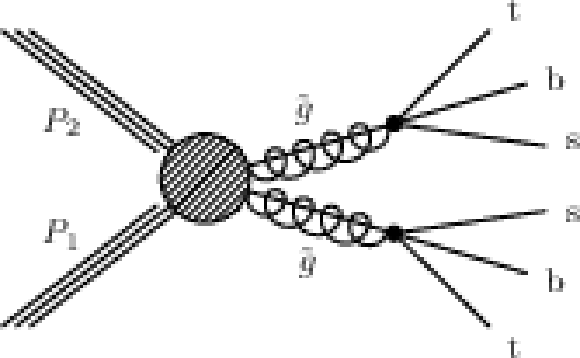
png ; pdf |
Figure 1:
Feynman diagram for pair production of gluinos decaying to tbs. |

png ; pdf |
Figure 2:
Fit to the CSV distribution in data for 4 ≤Njet≤ 5, HT> 1.1 TeV and CSV> 0.9. Error bars indicate the statistical uncertainty arising from MC statistics. |
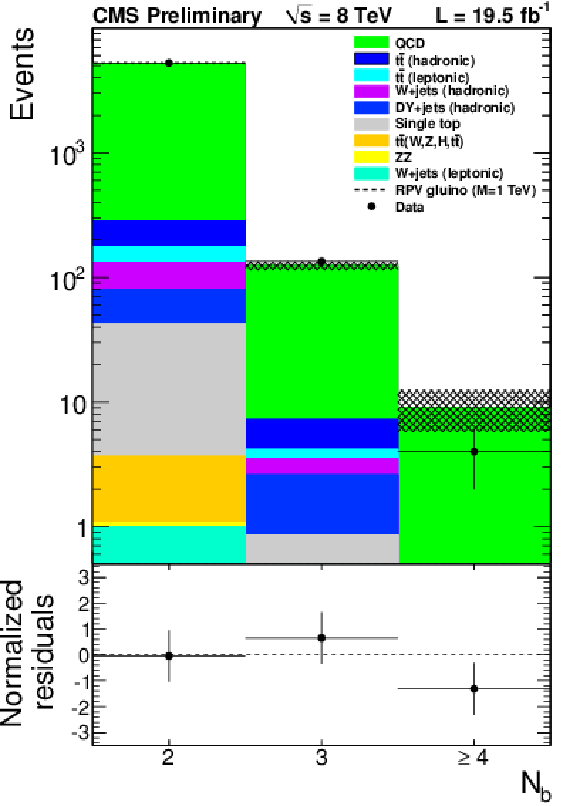
png ; pdf |
Figure 3-a:
Data (dots with error bars) and the corrected prediction of the Nb distribution are shown. The shaded band shows the MC statistical uncertainty. The a,b,c (d,e,t) series of plots shows data in which events are required to have 1000 $ |
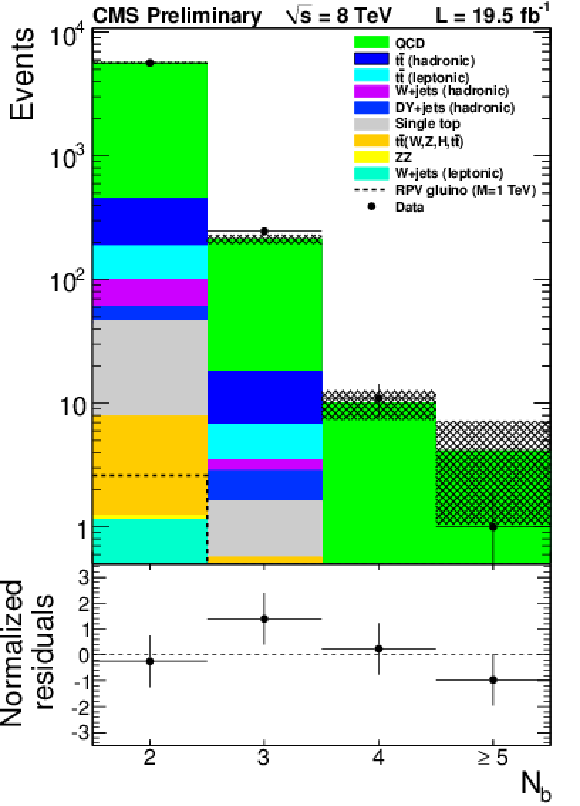
png ; pdf |
Figure 3-b:
Data (dots with error bars) and the corrected prediction of the Nb distribution are shown. The shaded band shows the MC statistical uncertainty. The a,b,c (d,e,t) series of plots shows data in which events are required to have 1000 $ |
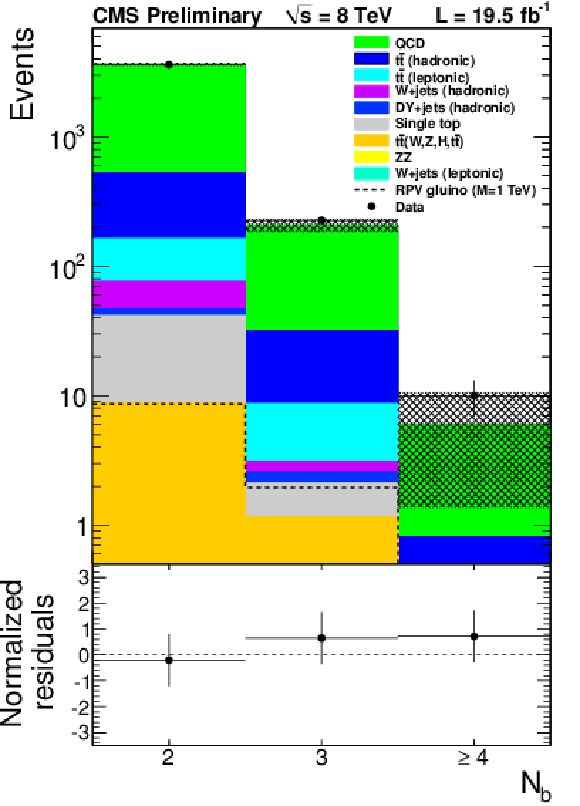
png ; pdf |
Figure 3-c:
Data (dots with error bars) and the corrected prediction of the Nb distribution are shown. The shaded band shows the MC statistical uncertainty. The a,b,c (d,e,t) series of plots shows data in which events are required to have 1000 $ |
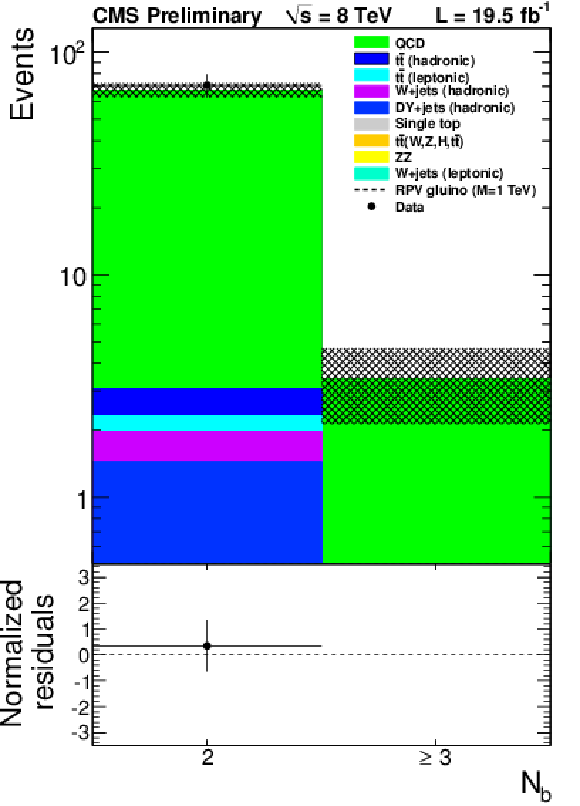
png ; pdf |
Figure 3-d:
Data (dots with error bars) and the corrected prediction of the Nb distribution are shown. The shaded band shows the MC statistical uncertainty. The a,b,c (d,e,t) series of plots shows data in which events are required to have 1000 $ |
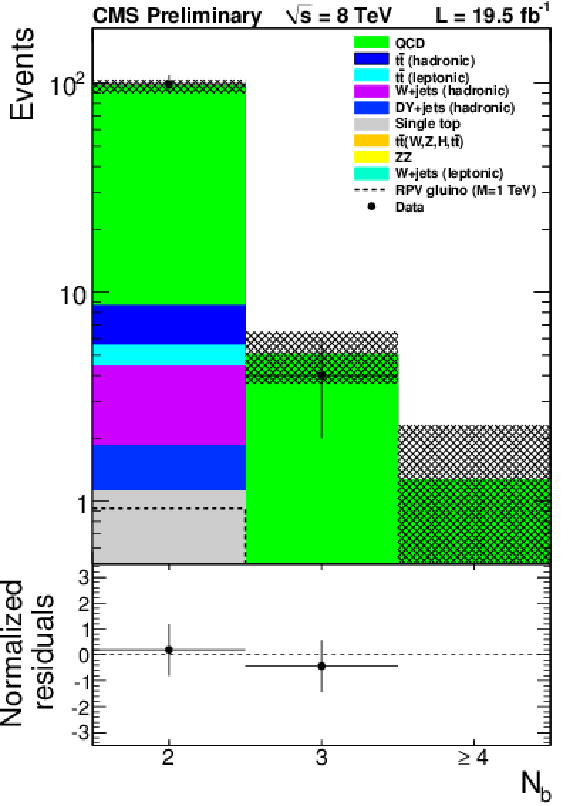
png ; pdf |
Figure 3-e:
Data (dots with error bars) and the corrected prediction of the Nb distribution are shown. The shaded band shows the MC statistical uncertainty. The a,b,c (d,e,t) series of plots shows data in which events are required to have 1000 $ |
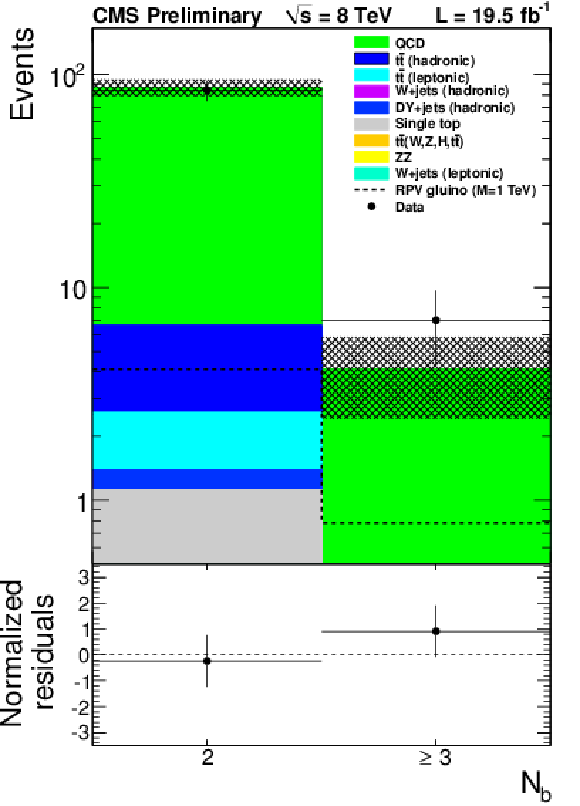
png ; pdf |
Figure 3-f:
Data (dots with error bars) and the corrected prediction of the Nb distribution are shown. The shaded band shows the MC statistical uncertainty. The a,b,c (d,e,t) series of plots shows data in which events are required to have 1000 $ |

png ; pdf |
Figure 4:
Data (dots with error bars), uncorrected MC prediction (band), and truth-matched gluon splitting events scaled to the data-MC difference in ΔR< 1.6 (histogram) in a typical signal region corresponding to HT> 1750 GeV and Njet= 6. |
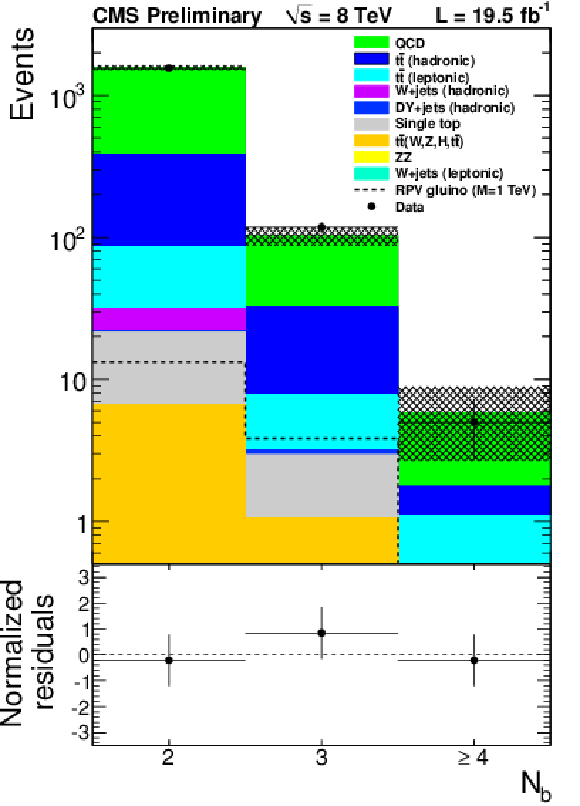
png ; pdf |
Figure 5-a:
Data (dots with error bars) and the corrected prediction of the Nb distribution in the high Njet signal region. The shaded band shows the MC statistical uncertainty. The a,b (c,d) series of plots shows data in which events are required to have 1000 $ |
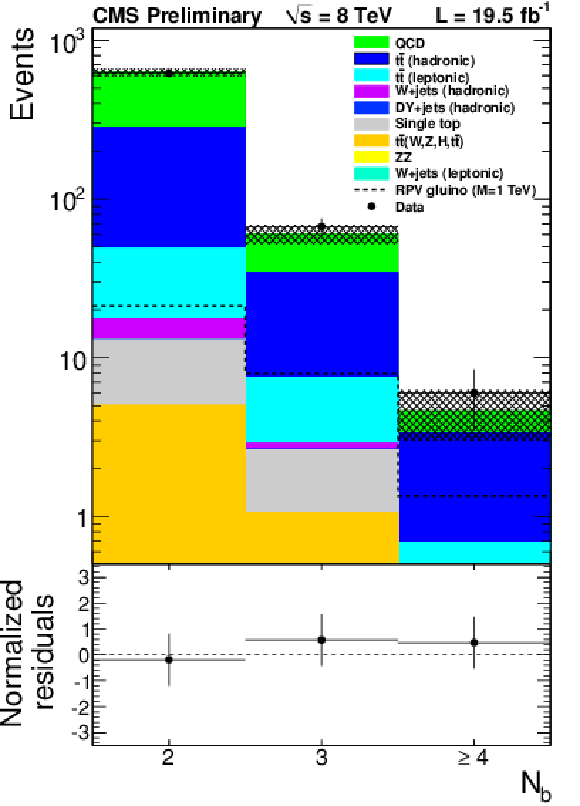
png ; pdf |
Figure 5-b:
Data (dots with error bars) and the corrected prediction of the Nb distribution in the high Njet signal region. The shaded band shows the MC statistical uncertainty. The a,b (c,d) series of plots shows data in which events are required to have 1000 $ |
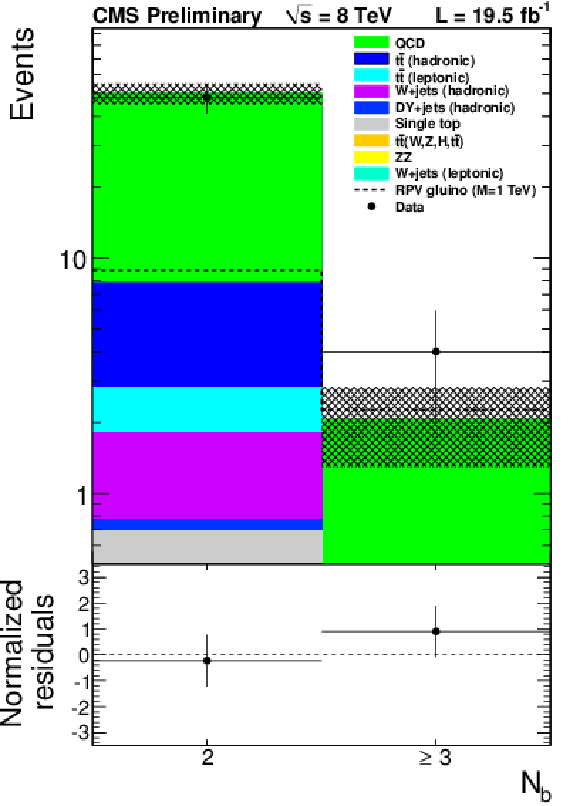
png ; pdf |
Figure 5-c:
Data (dots with error bars) and the corrected prediction of the Nb distribution in the high Njet signal region. The shaded band shows the MC statistical uncertainty. The a,b (c,d) series of plots shows data in which events are required to have 1000 $ |
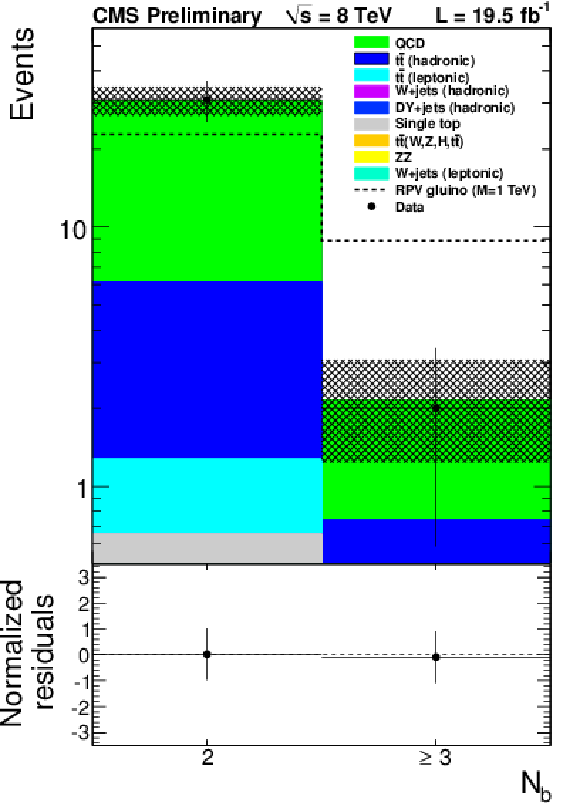
png ; pdf |
Figure 5-d:
Data (dots with error bars) and the corrected prediction of the Nb distribution in the high Njet signal region. The shaded band shows the MC statistical uncertainty. The a,b (c,d) series of plots shows data in which events are required to have 1000 $ |
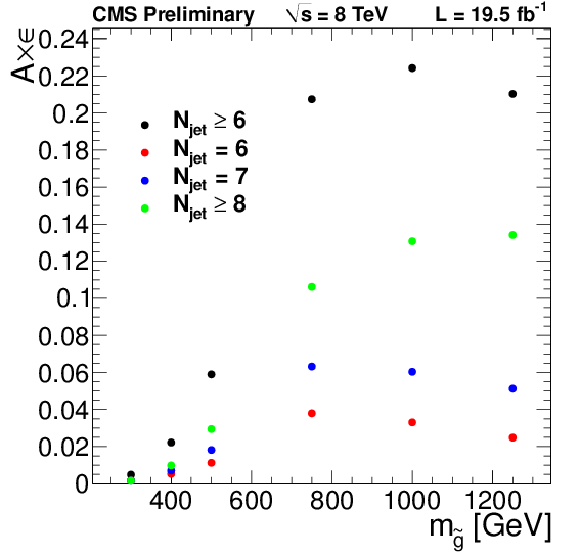
png ; pdf |
Figure 6-a:
Signal efficiencies as a function of m˜g for Nb≥ 2, HT> 1.0 TeV, and Njet≥ 6, together with the breakdown among Njet bins (a). Expected and observed limits in the all-hadronic ˜g→tbs analysis. The red band is the gluino pair production cross section (b). |
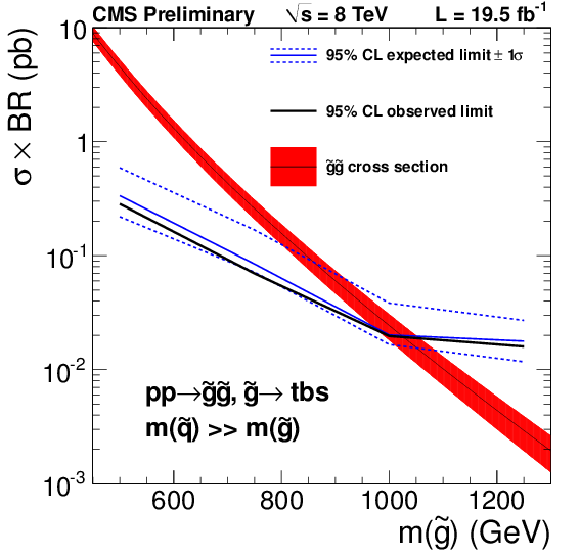
png ; pdf |
Figure 6-b:
Signal efficiencies as a function of m˜g for Nb≥ 2, HT> 1.0 TeV, and Njet≥ 6, together with the breakdown among Njet bins (a). Expected and observed limits in the all-hadronic ˜g→tbs analysis. The red band is the gluino pair production cross section (b). |

|
Compact Muon Solenoid LHC, CERN |

|

|

|

|

|

|